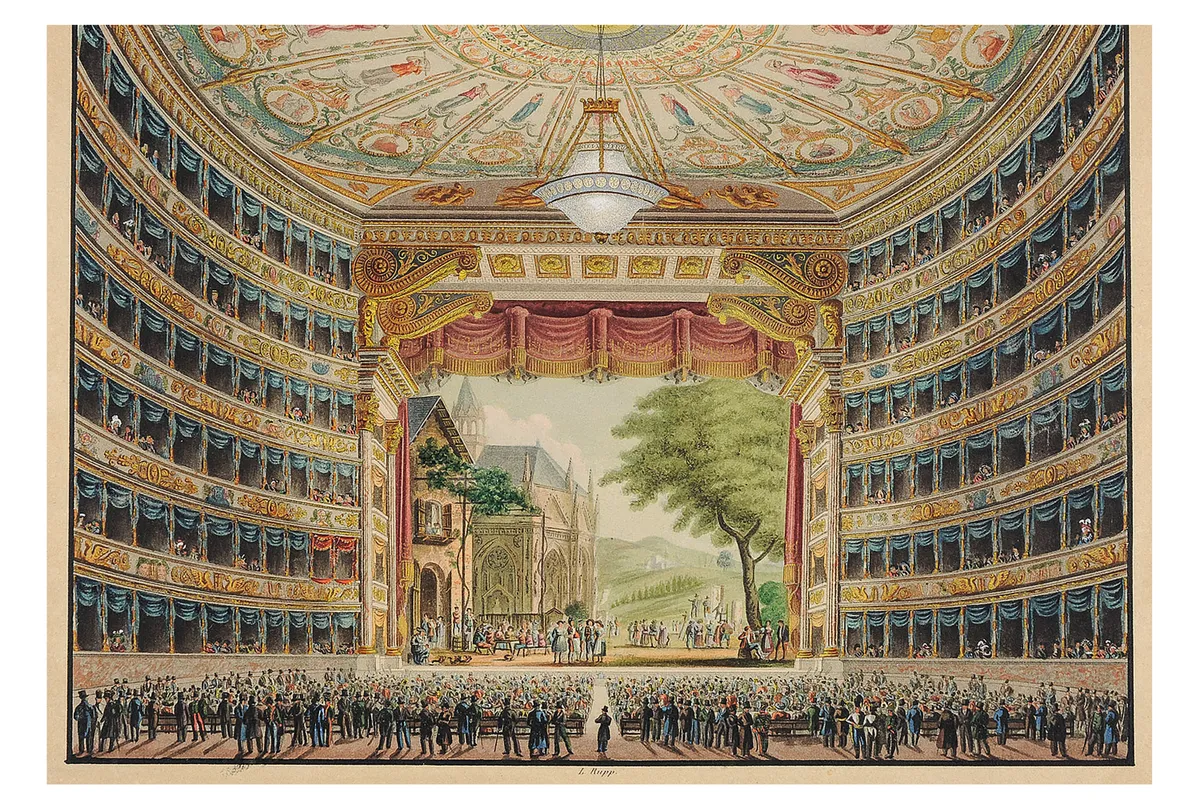The world-famous La Scala opera house in Milan took just two years to built, with work finishing in 1778, but it was not Milan's first opera house.
The Milan public had looked on in horror when, in February 1776, its beloved opera house burnt to the ground. The Royal Ducal Theatre, a wing of the Royal Palace, had caught fire amid the annual carnival celebration, and now 59 years of significant opera history was going up in smoke – over its six decades in existence the building had hosted the premieres of works such as the 14-year-old Mozart’s Mitridate, re di Ponto and Maria Pinottini’s Ciro in Armenia, one of the earliest operas by a woman to enjoy acclaim. The loss of such as important venue was keenly felt in this major Italian city. Milan, famous for the performing arts, simply had to have an opera house.
Plans were set in motion to build a new one, and a group of Milanese aristocrats who owned private palchi (boxes) in the Royal Ducal were keen to get things moving – writing to the ruling Austrian royal family, they demanded the construction of a new theatre. The Milan-based architect Giuseppe Piermarini was soon put to work. He came up with two designs, one of which met with the approval of Empress Maria Theresa, who appreciated the need of an official court theatre.
Why is it named La Scala?
Empress Maria Theresa issued the go-ahead for the demolishment of an old church, the Santa Maria alla Scala, to create space for a new opera house. It was from this church that the theatre was to take its name: the New Royal-Ducal Teatro alla Scala – ‘theatre of the staircase’.
Indeed, from there things moved rapidly upwards. Piermarini set to work creating a building with a neo-classical façade, comprising columns, pilasters and geometric ratios. Originally, La Scala (as it came to be known) wasn’t intended to be the street’s visual centrepiece but to to blend in inconspicuously. The interior, on the other hand, was designed to impress: Piermarini ensured it would display all the splendour that audiences might expect from a world-class opera house.
Who's opera opened La Scala in 1778?
The theatre was built over a period of two years and inaugurated with a performance of Salieri’s Europa riconosciuta on 3 August 1778. The 28-year-old composer, who had been sent to Milan by his mentor, Gluck, to fulfil the commission, would remain in the city for a further two years.
How many does La Scala seat?

With around 3,000 seats and stage dimensions among the largest in Italy, some of La Scala’s most opulent features could be found in the palchi, of which there were no fewer than six tiers. Their parapets (as well as the theatre ceiling) were ornately decorated with designs by Italian artists – and, following purchase, owners were free to further adorn the boxes as they pleased. It was a chance to a demonstrate wealth and class, so the rich would often pay the best designers in Europe to embellish them lavishly with paintings and woodcarvings. Above the palchi was a gallery – the loggione – where poorer people could watch the action. Populated with critical connoisseurs called the loggionisti, these spectators were known to be ruthlessly vocal towards performers, often booing, shouting or whistling. Their feedback would remain an acid test for performers for years to come.
Over the subsequent years, Rossini’s Il Turco in Italia (1814), Bellini’s Norma (1831) and Verdi’s Nabucco (1842) were just three of many now-famous operas whose first ever performances would be judged by the loggionisti. La Scala did not just serve as a theatre, however. It also hosted a ballroom, a ceremonial room and, as was the norm for theatres at the time, a casino.
For all the turbulent events that La Scala has witnessed over its history – not least an anti-Austrian uprising in 1848, Italian unification, fascist rule under Mussolini and two world wars – it has retained its pre-eminent place in opera’s pecking order. Various renovations, either to repair damage or make improvements, have been made along the way, the most recent of which saw the building close for two years. When it re-opened in late 2004, the opera chose to mark the occasion was, aptly, Salieri’s Europa riconosciuta.